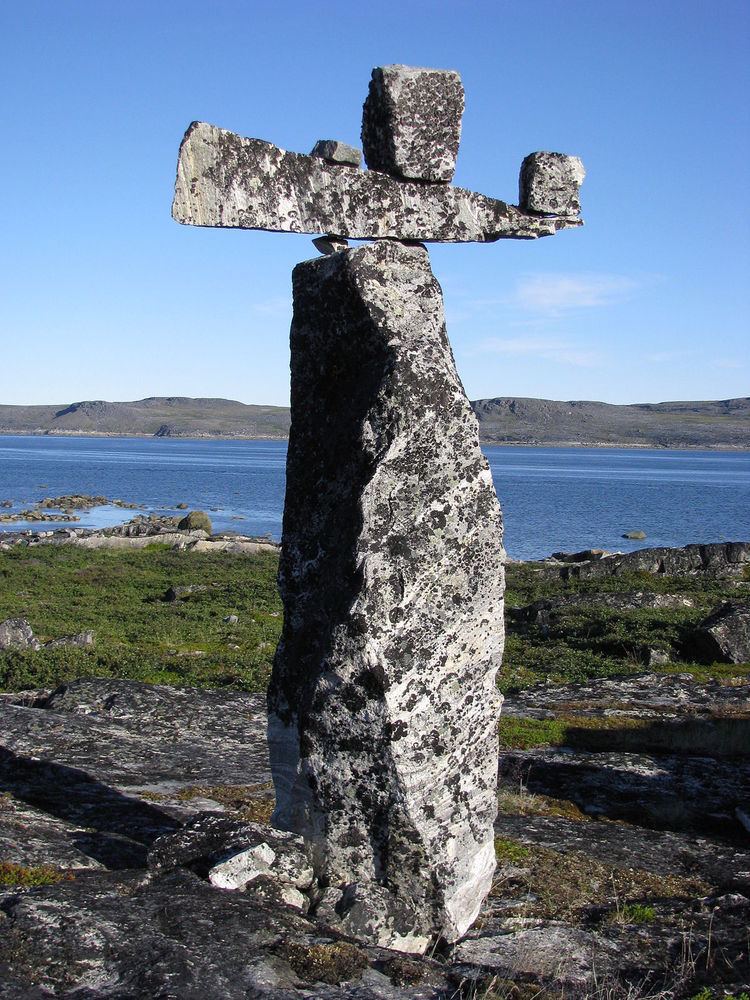Province Québec | ||
 | ||
60°0′14″N 70°26′10″W
Contents
The Hammer of Thor is a 3.3 metres (10.8 ft) tall, t-shaped, man-made rock formation, located along the Arnaud River in the Ungava Peninsula, Quebec, Canada. It was discovered in 1964 by an archaeologist who thought it was erected by Vikings. He named it "The Hammer of Thor", in reference to the hammer-wielding Thor of Norse culture. Today some scholars believe that it is more likely to be an artifact of Inuit culture, an inuksuk or stone landmark.
Description
The Hammer of Thor consists of three rocks stacked on top of each other—a vertical shaft, a cross piece, and a capstone. The vertical column, or shaft, measures about 8 feet (2.44 m) tall; the cross piece is about 4.5 feet (1.37 m) long; and the capstone is 14 inches (35.56 cm) in height. The entire monument stands about 3.3 metres (10.8 ft) high; and has been estimated to weigh about 4,000 pounds (1,800 kg).
It is located on the northern bank of the Arnaud River (formerly known as Payne River), about 15 miles (24.1 km) above Payne Bay, near the western coast of Ungava Bay, in the Ungava Peninsula, Quebec, Canada.
Discovery
The monument was discovered in 1964 by archaeologist Thomas E. Lee, during an anthropological expedition to Ungava. It had been standing for many years, and no one in the area knew who had erected it. Inuit tradition held that it predated their arrival in the area. Lee considered it to be European in appearance, and considered it to be proof that the Norse inhabited the Ungava region about a thousand years before. Lee thought it looked like a hammer and named the monument "The Hammer of Thor".
Given growing knowledge about and appreciation for Inuit culture, contemporary scholars believe this work is as likely to be an inuksuk, a stone landmark, erected by Inuit.
